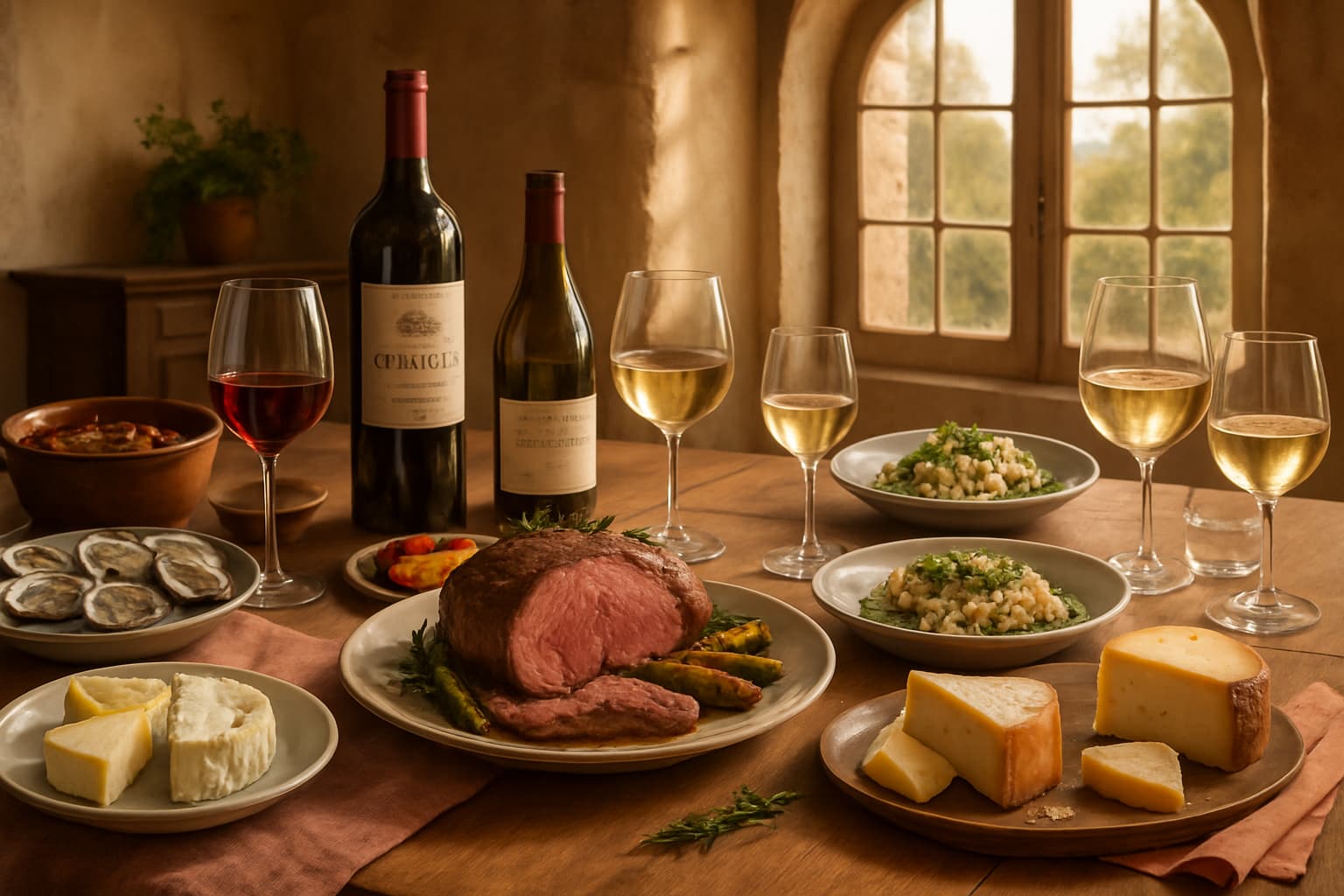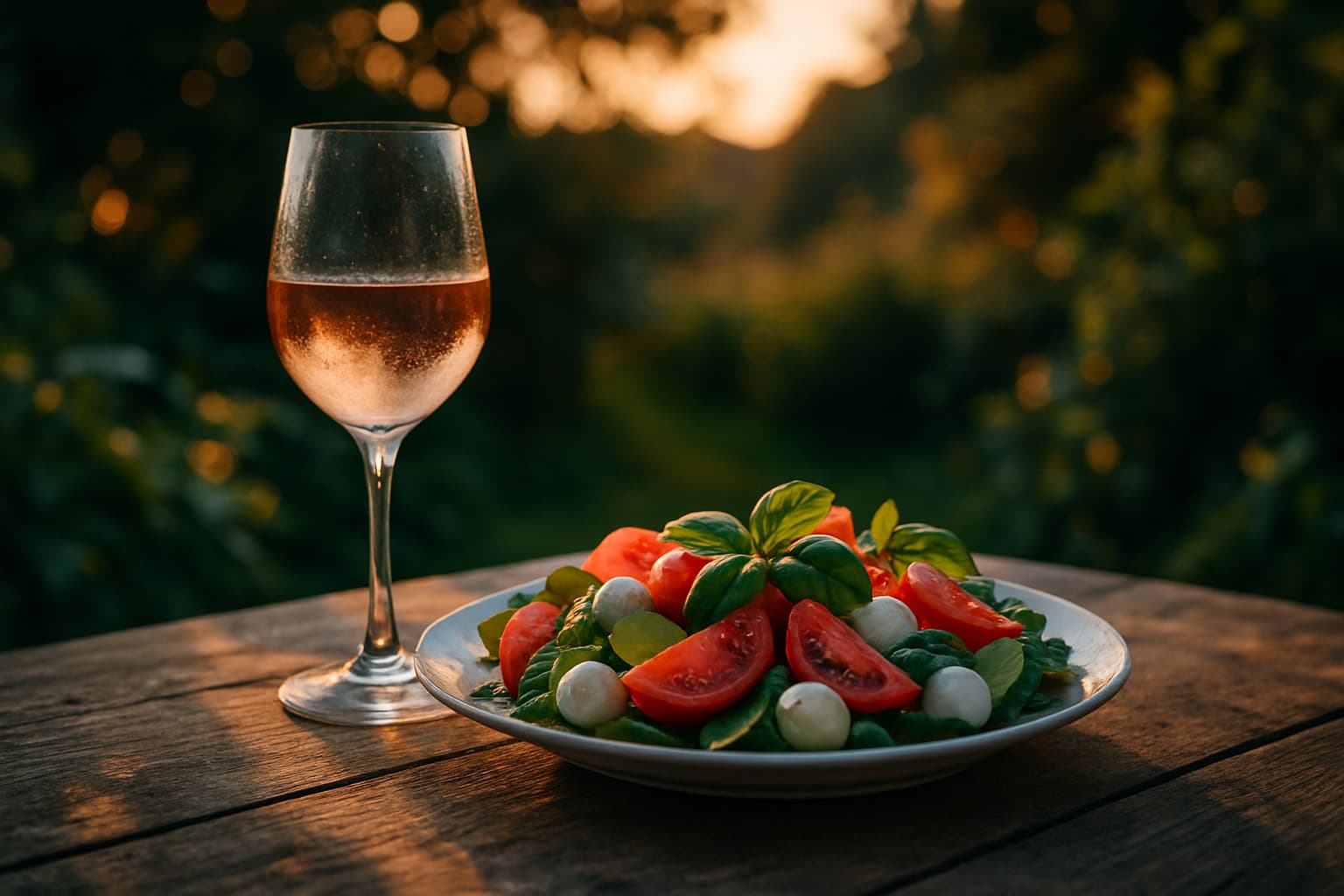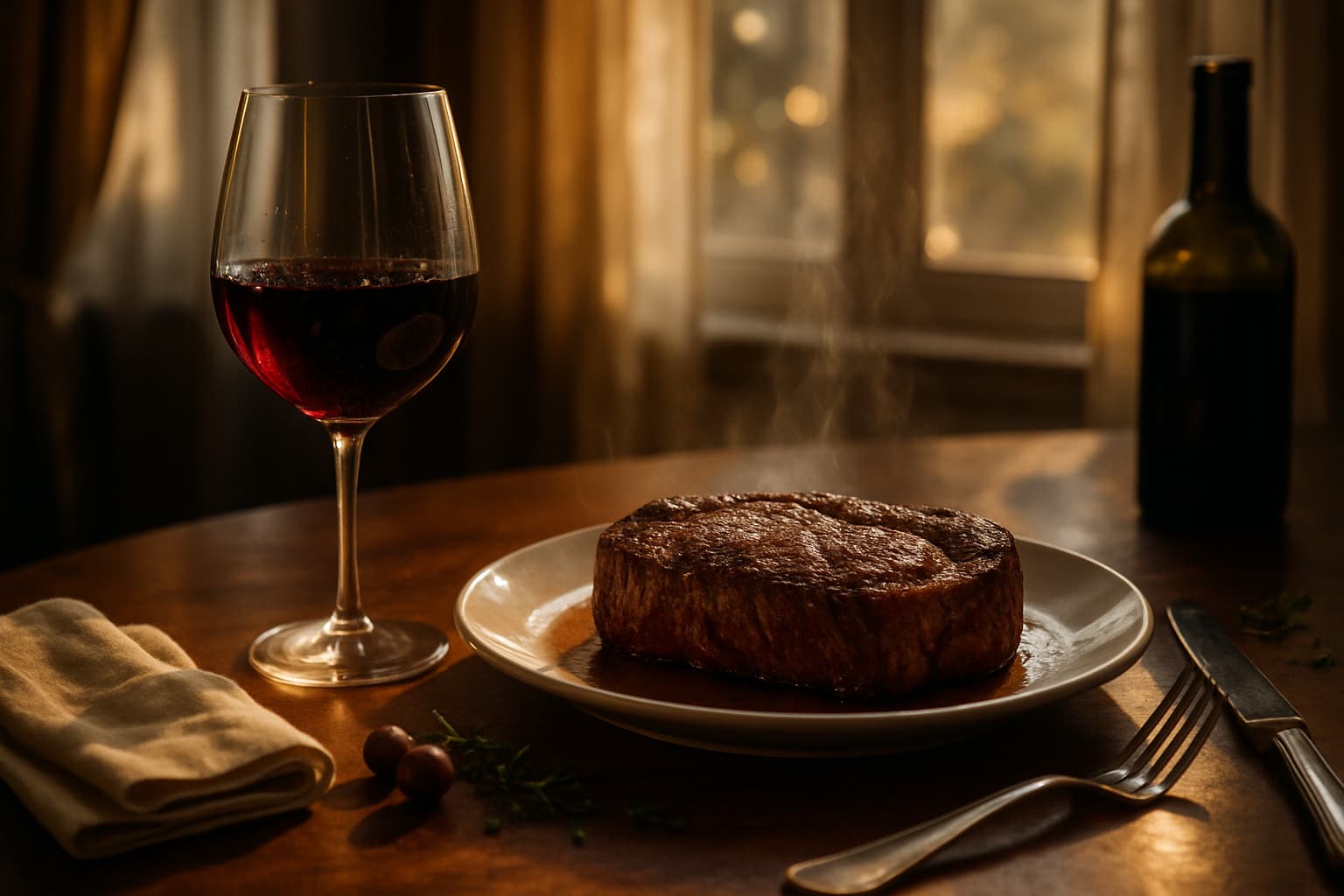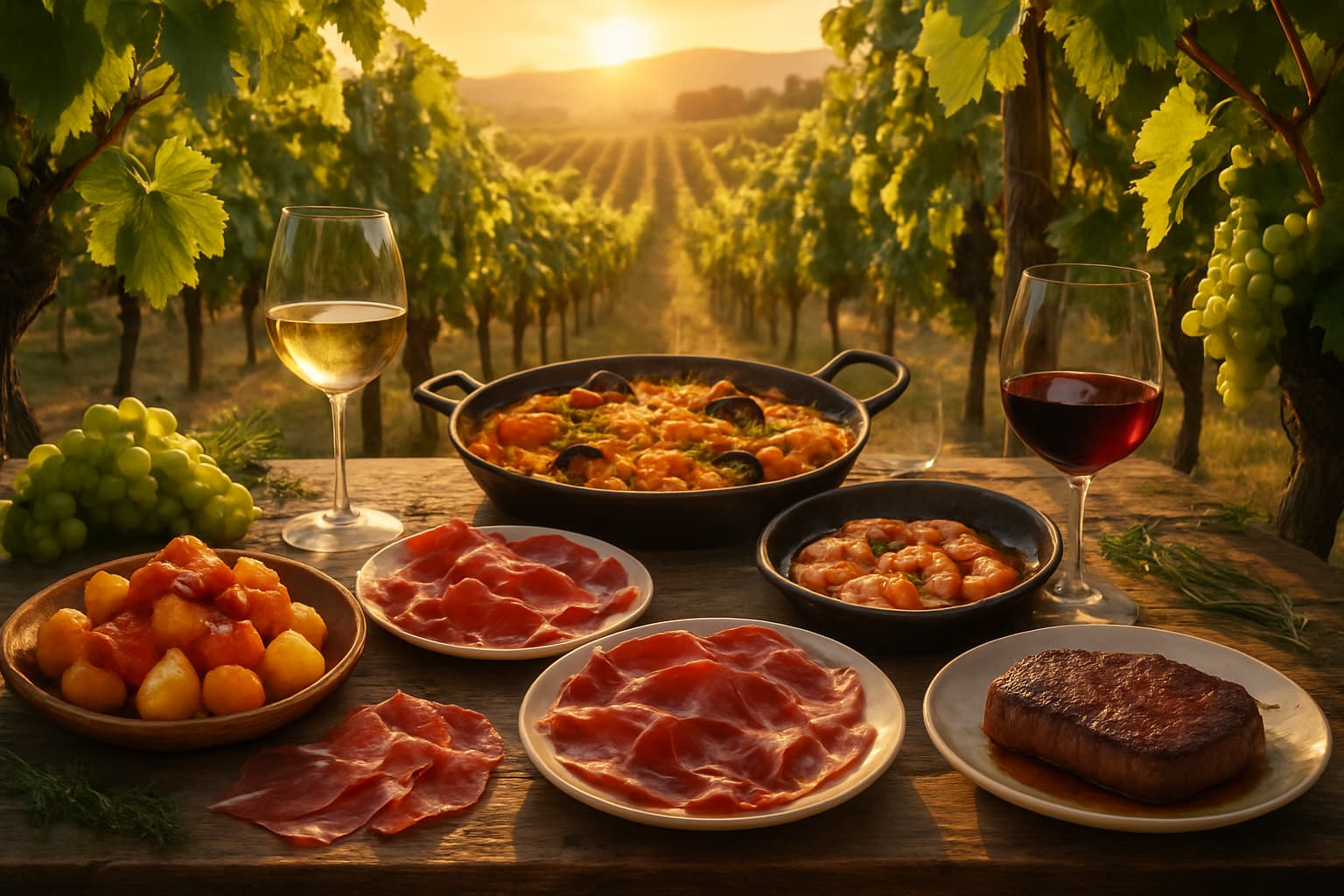

Exploring the Synergy of Rosé Wine and Summer Salads
Ah, the languid warmth of summer, the sun-kissed skin, and the delightful array of fresh salads that grace our tables. But what could make these moments even more delectable? A glass of chilled rosé wine, of course! The synergy between rosé wine and summer salads is not merely a culinary match; it's a symphony of flavors, a dance of textures, and a celebration of the season's bounty. Let us delve into this enchanting pairing, exploring how the light, crisp, and often fruity notes of rosé complement the vibrant freshness of summer salads.
The Charm of Rosé Wine
Rosé wine, with its alluring pink hue, is often misunderstood. It's neither a red wine nor a white wine, but rather a delightful in-between, offering a spectrum of flavors that range from dry to sweet, from subtle to bold. The beauty of rosé lies in its versatility; it can be light and refreshing, perfect for a hot summer day, or it can boast a more robust character, capable of standing up to heartier fare.
When we think of rosé, images of Provençal vineyards and Mediterranean coastlines may come to mind. The wine's origin often influences its taste, with regions like Provence in France, Rioja in Spain, and even regions in the United States like California and Oregon producing exceptional rosés. Each bottle tells a story, a narrative woven from the soil, the sun, and the hands that crafted it.
The Art of Summer Salads
Summer salads are a canvas for creativity. They embody the season's abundance, featuring ingredients like ripe tomatoes, crisp cucumbers, sweet corn, and an array of fresh herbs. The beauty of a summer salad lies in its simplicity and freshness; it's about letting the ingredients shine without overwhelming them with heavy dressings or complicated preparations.
Consider a classic Caprese salad, with its luscious tomatoes, creamy mozzarella, and fragrant basil, drizzled with a touch of balsamic and olive oil. Or perhaps a Greek salad, with its tangy feta, juicy olives, and crisp vegetables, all bathed in a zesty vinaigrette. And let's not forget the humble yet delightful green salad, a mélange of lettuces, perhaps adorned with avocado, nuts, and a light lemon dressing.
The Perfect Pairing: Rosé and Summer Salads
Now, let's explore how rosé wine and summer salads come together in perfect harmony. The key to this pairing lies in balance and complementarity. Rosé, with its light body and often crisp acidity, cuts through the richness of cheeses and dressings, while its fruity notes enhance the freshness of the salad's ingredients.
For a Caprese salad, a dry rosé from Provence would be ideal. The wine's acidity complements the richness of the mozzarella, while its subtle fruitiness echoes the sweetness of the tomatoes. The herbal notes in the wine also play well with the basil, creating a harmonious blend of flavors.
If you're enjoying a Greek salad, consider a rosé from Rioja. The wine's slightly fuller body and hints of spice can stand up to the bold flavors of the feta and olives, while its refreshing acidity balances the salad's tangy dressing.
For a simple green salad, a light and crisp rosé from California would be a delightful match. The wine's bright acidity and fruit-forward profile enhance the freshness of the greens, while its lightness ensures it doesn't overpower the delicate flavors of the salad.
Enhancing the Experience
To truly elevate your summer dining experience, consider the ambiance and presentation. Imagine dining al fresco, the sun setting in the distance, as you sip on a chilled glass of rosé and savor each bite of your salad. The setting adds another layer of enjoyment, making the meal not just a culinary experience, but a sensory one.
Presentation also plays a crucial role. Arrange your salad with care, perhaps using a beautiful serving platter or individual bowls. Garnish with fresh herbs or edible flowers to add a touch of elegance. And don't forget the glassware; a stemmed wine glass not only enhances the aroma of the rosé but also adds a touch of sophistication to the table.
Philosophical Underpinnings and Subtle Nuances
There's a deeper philosophy at play when we pair rosé with summer salads. It's about embracing the ephemeral nature of the season, about savoring the fleeting moments of warmth and sunshine. Rosé, often referred to as the "summer wine," embodies this transient beauty, its pink hue a reminder of the delicate balance between light and dark, between warmth and coolness.
The pairing also speaks to the concept of harmony in cuisine. Just as a great meal is about the balance of flavors and textures, so too is the pairing of food and wine. It's about finding the perfect counterpoint, the ideal complement, to create a dining experience that is greater than the sum of its parts.
And let's not overlook the subtle nuances of this pairing. The way the acidity of the rosé enhances the freshness of the salad, the way the fruitiness of the wine mirrors the sweetness of the tomatoes, the way the herbal notes in the wine echo the basil or oregano in the salad—these are the details that elevate a simple meal into a culinary masterpiece.
Conclusion
In the end, the synergy of rosé wine and summer salads is a celebration of the season, a testament to the beauty of simplicity, and a reminder of the joy that comes from savoring the moment. Whether you're dining alone or with loved ones, this pairing offers a sensory experience that is both indulgent and refreshing, both sensual and satisfying.
So, the next time you find yourself basking in the warmth of summer, reach for a chilled bottle of rosé and a bowl of your favorite salad. Let the flavors dance on your palate, let the aromas envelop you, and let the experience transport you to a place of pure culinary delight. After all, as the great philosopher Epicurus once said, "The art of living well and the art of eating well are one." And in the pairing of rosé and summer salads, we find a perfect embodiment of this timeless truth.
More from Wine and Food Pairing
Master the Language of Wine
Tannins
Tannins are astringent compounds found in wine that contribute to its texture and aging potential, often causing a drying or puckering sensation in the mouth. They are derived from grape skins, seeds, and stems, as well as from oak barrels used during aging.
/ˈtænɪnz/
Malic acid
Malic acid is a naturally occurring organic acid found in grapes that contributes to the tart, green apple-like flavor and crispness in wine. It plays a significant role in the taste and acidity of wine.
/mælɪk ˈæsɪd/
Filtration
Filtration in winemaking is the process of removing solid particles from wine to clarify and stabilize it before bottling, using various types of filters to achieve different levels of clarity and remove unwanted elements like yeast, bacteria, and sediment.
/fɪlˈtreɪʃən/
Oxidation
Oxidation in wine is a chemical reaction between the wine and oxygen that can change its flavor, aroma, and color. This process can be beneficial or detrimental depending on the extent and context of the exposure.
/ˌɒksɪˈdeɪʃən/
Microclimate
Microclimate refers to the unique climate conditions of a small, specific area within a larger region, significantly influencing grapevine growth and the characteristics of the resulting wine.
/ˈmīkrōˌklīmit/
Subscribe to Our Newsletter
Get weekly wine recommendations, vineyard news, and exclusive content delivered to your inbox.

